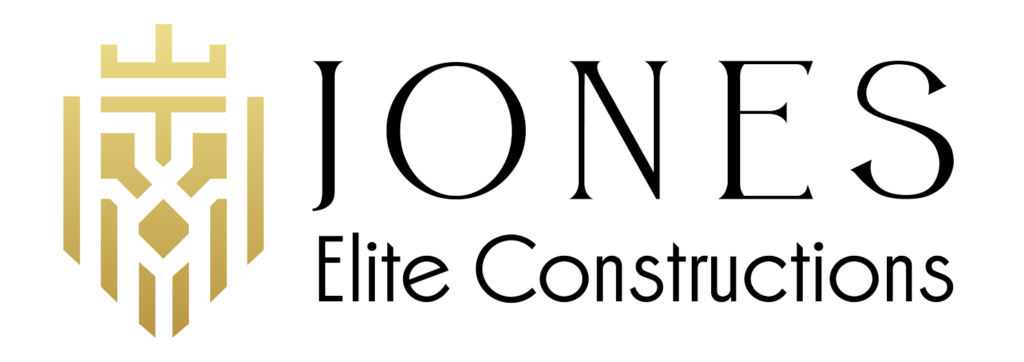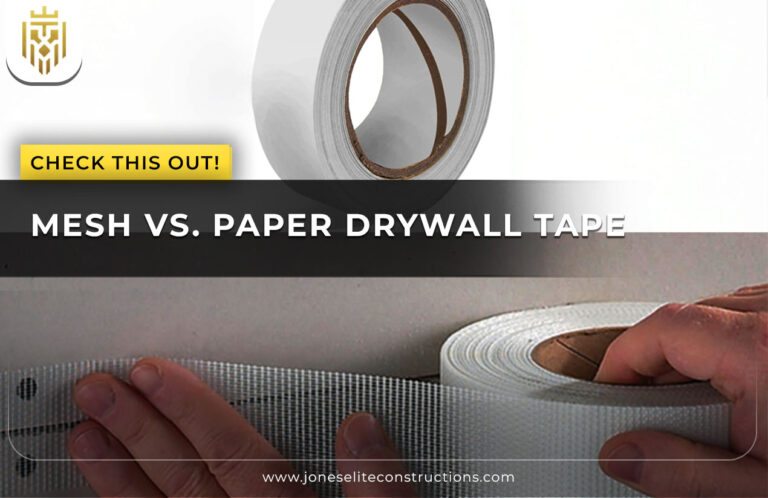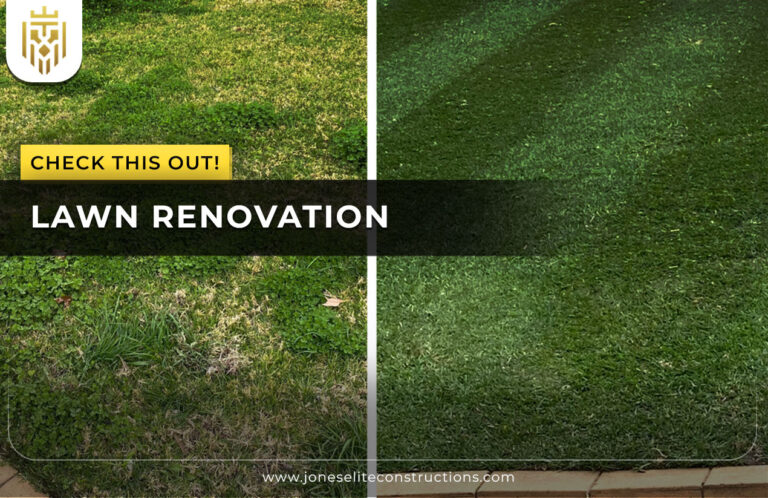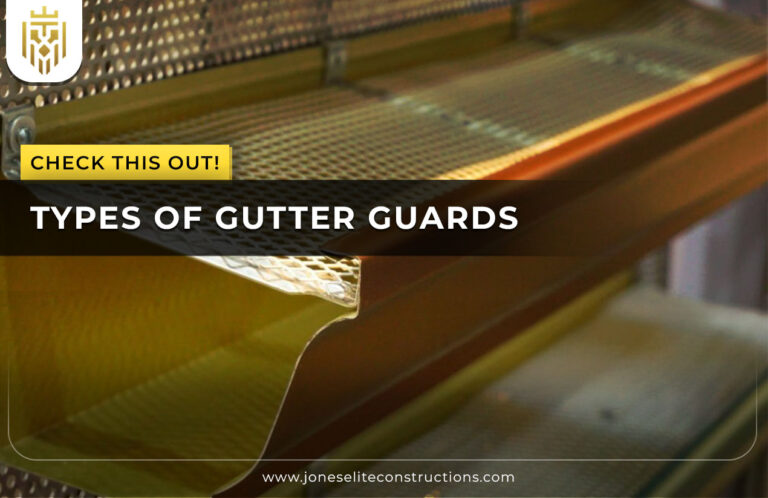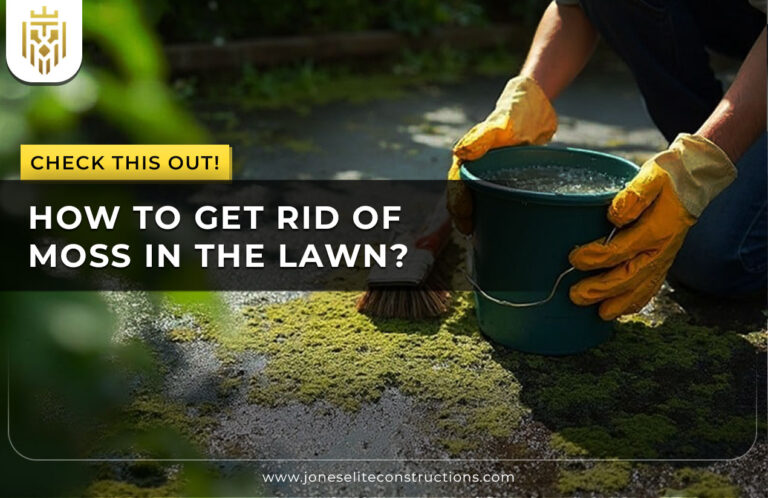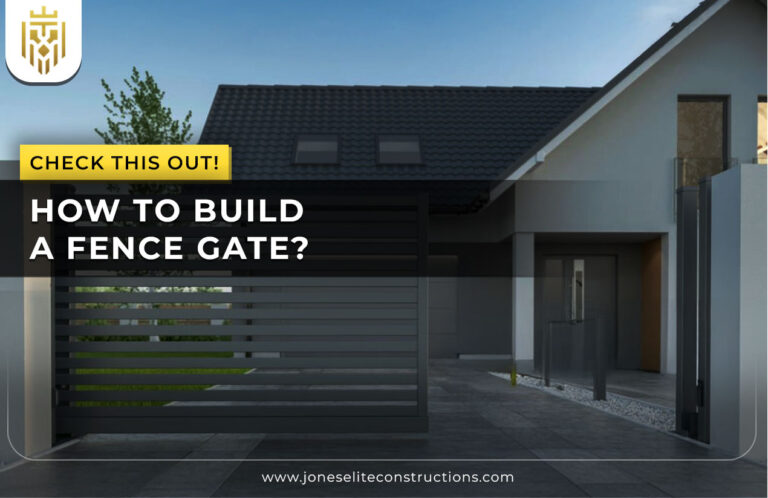Drywall Texture Types and Tips
The choice of type of drywall texture creates an aesthetically pleasing finish. Be it smooth modern drywall texture types or rugged finishes, different texture types of drywall can add depth, warmth, and character to your space.
-
Texture for Ceilings and Texture for Walls
Ceiling and wall textures conceal imperfections, decrease sound, and increase durability. Smooth modern drywall texture types with a great deal of character like knockdown or popcorn create a marvellous kind of appeal for your space.
Drywall Textures classified by Methods of Application

Drywall textures are categorised according to their application methods: hand-applied and spray. Different methods yield different types of drywall finishes; the hand and spray application methods combine to create unique, customized finishes for any given space.
-
Hand Applied Textures
Hand textures are created with various hand tools like pan and trowel using numerous techniques. These types of finishes provide a more customized look within the whole texture types of drywall category, giving a unique finish to any given room.Orange peel, knockdown, and skip trowel are some of the more hand-applied textures of drywall.
-
Spray Applied Textures
The spray-applied texture allows the efficient application of a texture mud or compound with a texture sprayer. This technique creates drywall texture types known as knockdown and popcorn. These drywall texture types are ideal for large areas as they easily allow the choice of different finishes in the field.
Types of Hand Applied Texture
Types of drywall texture created by hand include orange peel, comb, knockdown, and rosebud. These types of wall textures involve the use of various tools such as brushes or trowels to create unique finishes that are rich in character and depth.
-
Orange Peel Texture

The orange peel texture, a favourite among wall texture types, is achieved when drywall compound is rolled onto the surface to create uniformly spaced bumps resembling an orange peel.
-
Rosebud Drywall Texture

Rosebud drywall texture offers a flower petals pattern best suited for ceilings. The Rosebud stomp brush is used in this hand-troweled process to create an important design element in any space.
-
Comb Drywall Texture
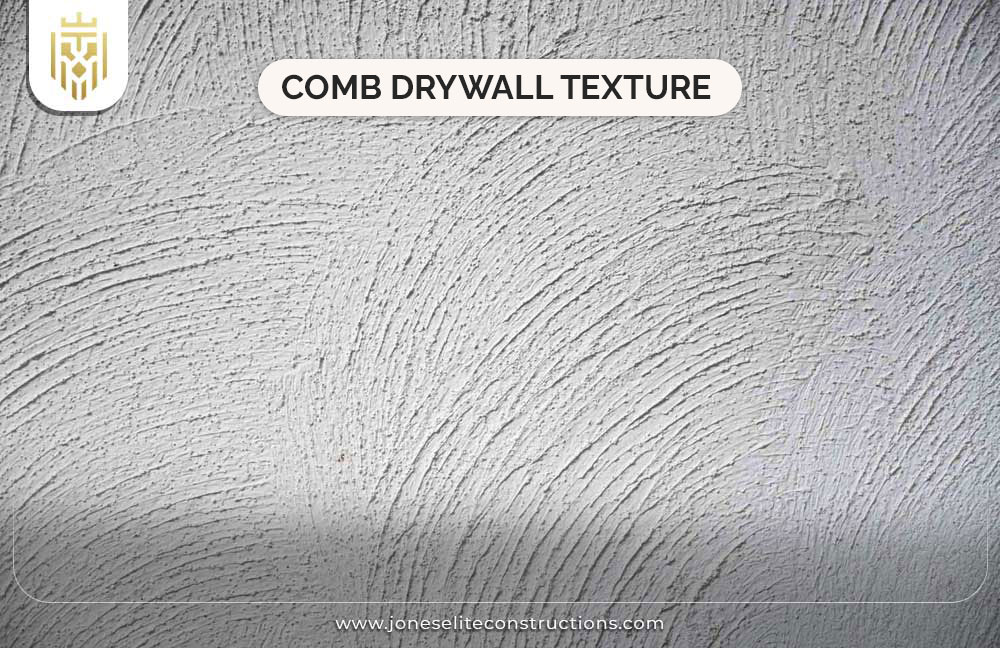
Comb texture uses a comb tool to create linear patterns with waves or swirling effects. The wall texture type, applied by roller, is followed by the combing of wet compound to achieve a distinct textured appearance.
-
Stomp Brush Drywall Texture
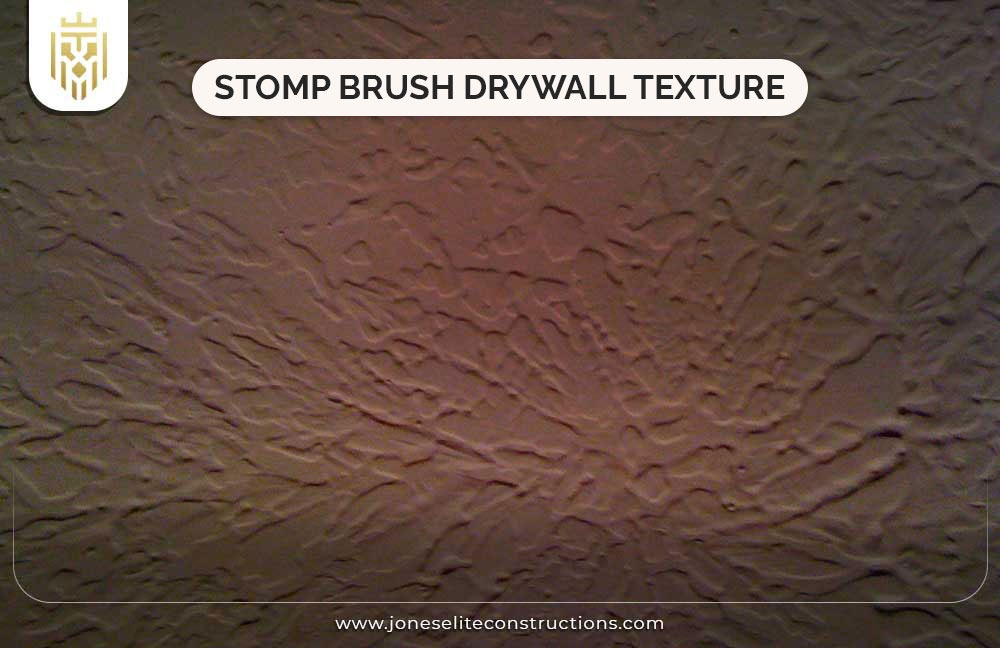
The stomp brush texture, also called slap brush, is created by stamping joint compound onto the surface with the aid of a brush. This hand-applied texture provides an attractive, rugged finish for walls and ceilings.
-
Venetian Dry Wall Finish

Venetian drywall finish has the appearance of polished marble with the application of multiple thin coats of plaster mixed with marble dust. The result is a beautiful, smooth surface that adds elegance and depth to your walls.
-
Skip Trowel
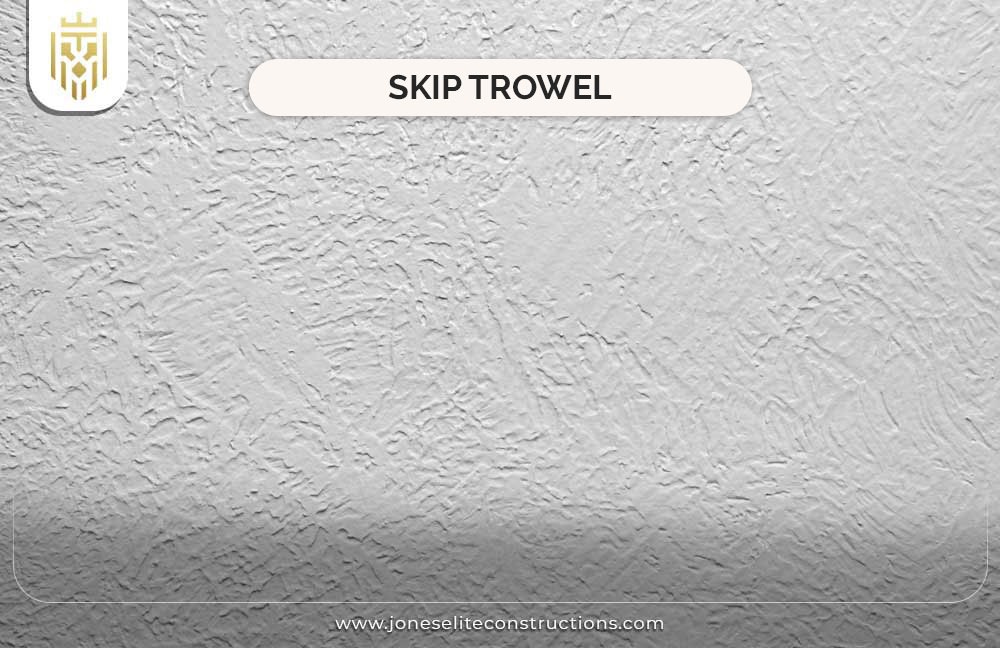
The skip trowel drywall finish is made by applying joint compound in sweeping arcs, producing a varied texture that is either smooth or textured in various places. This hand technique produces a refined surface, making it ideal for the rustic or vintage look.
-
Knockdown Drywall Texture
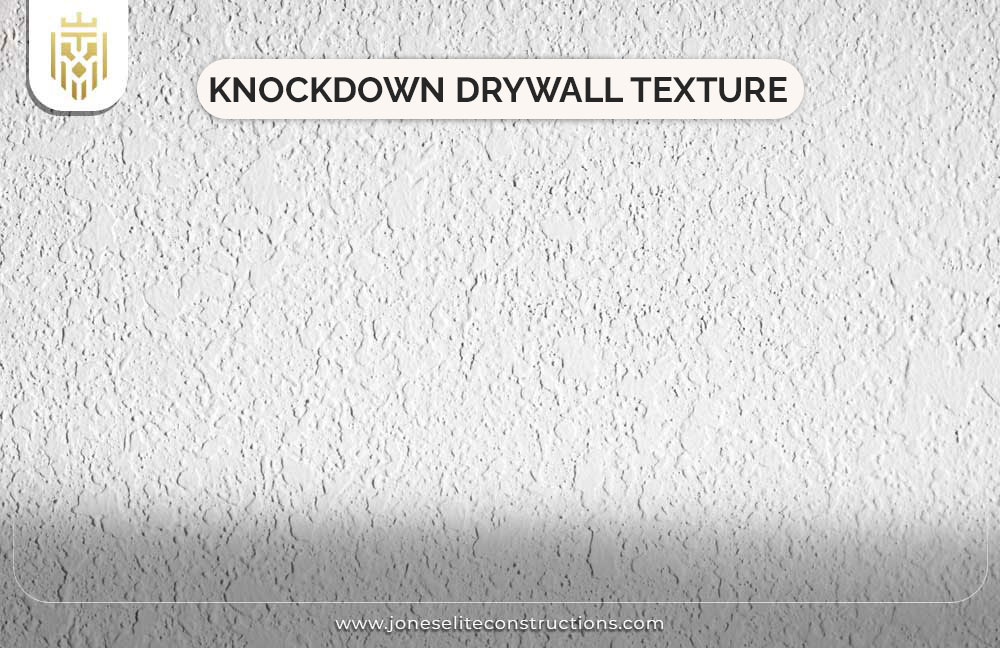
Knockdown drywall texture is made with a smooth finish that captures subtle mottled variations by applying joint compound and subsequently “knocking it down.” This is one of the most favoured choices recommended to add dimension and hide imperfections.
-
Lace Drywall Texture
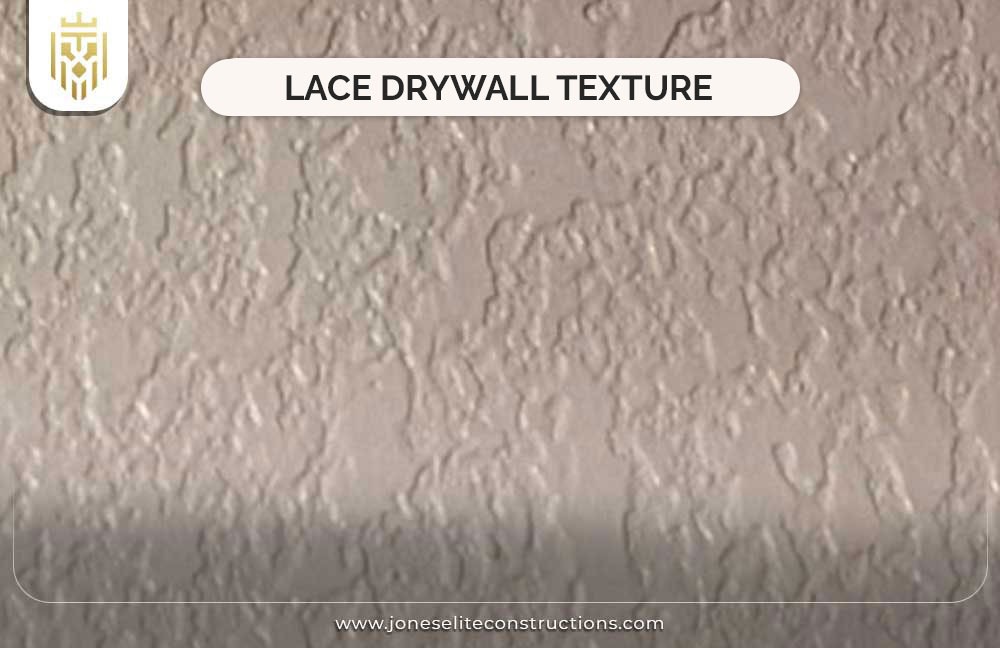
The lace drywall texture or Spanish lace is produced by applying drywall compound with a special brush in a circular pattern, creating an intricate web design. An excellent technique for applying more texture and elegance.
-
Sand Swirl
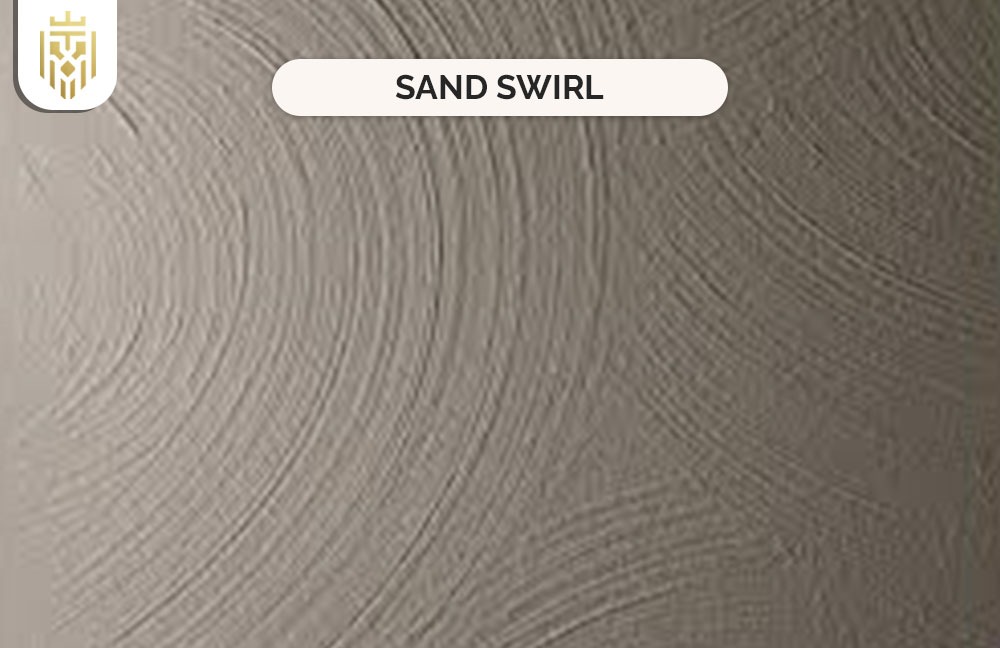
The sand swirl texture is a mixture of sand with drywall compound applied in swirling patterns. This hand-applied texture category gives an organic, soft texture to any wall and works well for traditional and contemporary styles.
Types of Spray Applied Texture

Spray drywall textures use a texture sprayer and include a lot of favourite drywall texture types such as popcorn, knockdown, and orange peel. New drywall texture types are great for large spaces, which makes application much faster.
-
Smooth Dry Wall Finish
A smooth finished drywall has an even, flat surface having no visible texture and comprises several coats of skim. This smooth modern drywall texture category is much favoured for a high-end clean aesthetic within minimalist or modern designs.
-
Spray Sand Ceiling Texture
Spray sand ceiling texture results from spraying a mixture with sand or granular aggregates. This drywall finishing adds an interesting look and enhances room acoustics.
-
Popcorn Ceiling Texture
Popcorn ceiling texture, also known as stipple or acoustic ceiling, utilises small particles of vermiculite or polystyrene to create its bumpy surface. This popular drywall texture is not only sound dampening but adds a beautiful design element.
-
Orange Peel Texture
Orange peel texture is achieved by spraying a drywall compound mixed with water or using aerosol cans. The finish resembles the skin of an orange creating a muted yet textured wall texture type that is commonly used.
-
Knockdown Drywall Texture
Knockdown drywall texture creates smooth yet mottled surface patterns that provide subtle dimension. This drywall texture type is performed and finished to smooth-to-the-touch by spraying joint compound and knocking it down.
-
Hawk and Trowel
Hawk and Trowel is a technique for applying drywall mud, using a hawk (a flat metal plate) and a trowel (a flat blade). This technique gives textured surfaces, which add dimension and interest to walls and ceilings.
Tools and Materials Needed
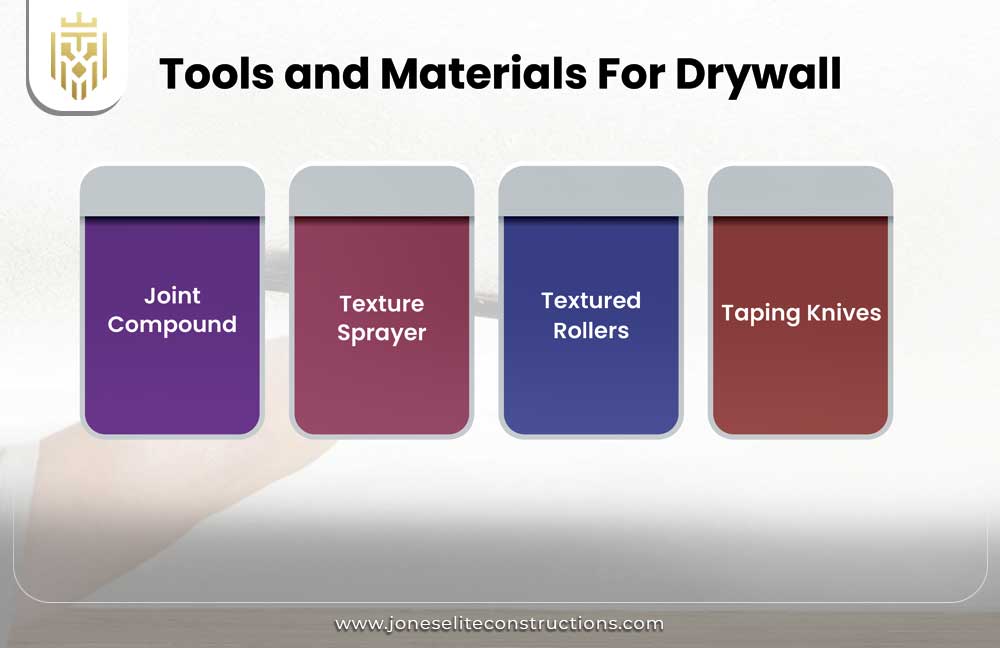
The basic tools needed for types drywall finishes include joint compound, taping knives, texture sprayer, and textured rollers. These help in creating smooth modern drywall texture types and by traditional textures which use a brush or sprayer.
-
Joint Compound
A compound or drywall mud is used to fill the gaps and ultimately provide a good smooth surface against the drywall. It serves as the essential ingredient in the creation of drywall textures, in getting a finish like knockdown or orange peel.
-
Texture Sprayer
A texture sprayer is a spraying mechanism used to apply textured finishes, such as drywall textures, on larger areas. It serves as an efficient alternate to hand spraying, especially regarding spray finishes such as popcorn or knockdown textures.
-
Textured Rollers
Textured rollers are the tools used to apply patterned textures onto walls. You may find several different designs with which to make disparate types of wall texture, like orange peel or sand swirl, giving depth and design interest.
-
Taping Knives
Taping knives are also called drywall knives and help smooth joint compound over seams and imperfections. They are main tools used for creating both hand-applied and spray drywall textures, ensuring a smooth and continuous finish across the granules.
Tips For Applying Texture To Your Walls
When applying texture, clean and prepare the surface well by removing dust and debris. Then choose your texture type of drywall and make your test on a sample board. Use rollers, sponges, or stencils so that you may get the wall texture type you are after with a professional look.
FAQs
1) What are the levels of texture for drywall?
Drywall is distinguished by five levels ranging from Level 0 (unfinished) to Level 5 (smooth modern drywall texture types). Level 5 is the highest, which fits apart from having gloss finishes and hides imperfections better than lower grades of drywall texture.
2) What drywall texture is most popular?
Knockdown is by far the most popular type of drywall texture. This extremely adaptable style features smooth areas and areas of texture, effectively hiding faults while adding dimension. Works well with many other types of drywall texture, including spray and hand-applied finishes.
3) What is the most expensive drywall texture?
Venetian plaster is the most expensive type of drywall textures and offers an ultra-smooth, marble-like appearance. It falls under smooth modern drywall texture types and requires very skillfully skilled labour and several coats to make the final finish. Therefore, this drives up the cost of both materials and labour.
4) What is the difference between knockdown and stomp texture?
Knockdown refers to the act of spraying mud onto the surface, which is then flattened with a knife. Stomp is the method where mud is stamped onto the surface with a brush forming rough patterns on the surface. Both are types of drywall textures, but stomp is coarser and serves a different purpose.
